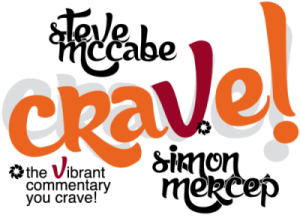Hidden Figures tells the little-known story of Katherine Goble, a computer — in the sixties, the word was a job description, not the name of a machine — who computed trajectories for the embryonic American space programme’s first rocket launches, along with her two friends and colleagues, Dorothy Vaughan and Mary Jackson, who also worked in NASA’s computing centre in Langley.
What makes their story remarkable, and in need of telling, is that the three women weren’t just computers. They were, as the sign above their heads reminded them, “colored [sic] computers,” and Langley is in Virginia, in the segregated, racist, white-supremacist South. The film, then, while describing the triumph of America’s catching up with the Soviet Union with John Glenn’s completion of three of the seven planned orbits of Freedom 7, focuses on the way in which NASA, while relying on the work of the three women, and dozens more like them, makes sure they know their place in white society.
Taraji P. Henson plays Goble with understated dignity and strength, depicting the grace with which Katherine dealt with the indignities and exploitations imposed upon her and her friends while at the same time being expected to work late into the night for the mission. Octavia Spencer’s Vaughan and Janelle Monáe’s Jackson support Goble outstandingly, and the three of them carry the film beautifully. In the background are Kevin Costner, channelling Tom Hanks as Al Harrison, the mission director who knows how badly he needs the contributions only Goble can offer, and Jim Parsons, struggling to overcome the typecasting that means that every role he ever takes on will, essentially, be Sheldon Cooper, as Al’s deputy.
And the film is, quite simply, excellent. The three leads work together wonderfully, their characters strong and sharp and resilient. Its politics are quite clear, and the subtle depictions of segregation — the “colored patrons only” signs on the bus, or on water fountains — are as potent as the more explicit references, such as Dorothy’s being told that she must use the “colored” section of the ostensibly public, for which we read “white,” library. Levi, Mary’s husband, played by Aldis Hodge, has, alongside a single, contained outburst from Katherine, the only true politicised voice in the film, insisting as he does that his children be aware of what is being done to southern blacks and those who try to support them. He also reminds his family and friends that civil rights will only truly be won when they are taken, not given.
And this leads to possibly the only complaint to be made about Hidden Figures. Yes, Goble, Jackson and Vaughan do rise up the ranks of NASA, and they do so because they are, demonstrably, every bit the equal — and then some — of their white colleagues, but they do so very politely. They’re rewarded almost because they don’t make too much of a fuss. It’s a story that white America needs to hear — that while slavery might have ended a century earlier, blacks still serve the interests of a white country without equal stake and equal reward. But it’s told in a way that’s palatable to white America. Blacks, for the most part, know their place, and when white men and women see their value, then they’re granted a seat at the table. Redemption — one very sharp, very tart and delicious comeback from Vaughan notwithstanding — comes very easy to the hierarchy of NASA who take advantage of the three central characters far too long.
But even if the story is told imperfectly, it’s told, and it’s told well. Yes, Goble, Jackson and Vaughan are the only three black faces, much of the time, among a sea of white, but that reflects the milieu within which they worked — worked harder than anyone. Yes, the engineers and astronauts and managers were all white and almost all men, but again, that was the reality within which these women lived. But the film is very much their film, and director Theodore Malfi makes it quite clear that this is a story of injustice that needed righting. In doing so, he’s made a film that sparkles with colour — the bright Technicolor of the cinematography reminds us that this is, very much, a story of the 1960s — and music scored and curated with love by Pharrell Williams. Hidden Figures tells a story that should have been told a long time ago, and it tells it wonderfully. It’s hard to recommend this film highly enough.
\

